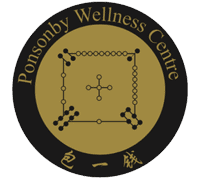Acupuncture Reduces High Blood Pressure
Published Friday 21 August 2015
By Catharine Paddock PhD
A new study suggests that a form of acupuncture may benefit patients with high blood pressure and lower their risk of stroke and heart disease.
Electroacupuncture is a form of acupuncture that applies low-intensity electrical pulses through needles inserted at specific points on the body.

The single-blind trial, conducted at the University of California-Irvine (UCI), is the first scientific confirmation that the ancient Chinese medical technique is beneficial for patients with mild to moderate hypertension.
In the journal Medical Acupuncture, the team describes finding how electroacupuncture can lower blood pressure for up to 6 weeks in patients with hypertension. Electroacupuncture is a form of acupuncture that applies low-intensity electrical pulses through needles inserted at specific points on the body. The researchers say their findings suggest that with regular use, electroacupuncture could help people manage their blood pressure and reduce their risk of heart disease and stroke in the longer term.
Senior author John Longhurst, a cardiologist and UCI professor of medicine say the clinical study comes after nearly 10 years of bench research into the effect of acupuncture on high blood pressure. He adds: “By using Western scientific rigour to validate an ancient Eastern therapy, we feel we have integrated Chinese and Western medicine and provided a beneficial guideline for treating a disease that affects millions in the US.”
70% of treated patients experienced a noticeable drop in blood pressure. According to the Centers for Disease Control and Prevention (CDC), there are about 70 million American adults (29%) with high blood pressure – only about half of whom have the condition under control.
Fast facts about acupuncture
Acupuncture is a traditional Chinese medicine that has been in use for over 3,000 years.
It uses thin needles to stimulate one or more out of hundreds of specific points on the body
US regulators approved acupuncture needles for use by licensed practitioners in 1996.
High blood pressure costs the US some $46 billion a year. This figure covers health care services, medications and absence from work.
For their study, Prof. Longhurst and colleagues recruited 65 patients with hypertension who were not taking any Meds to treat their condition. Each patient was randomly assigned to one of two groups. Both groups were treated with electroacupuncture, except that one group (the treatment group) had it applied to both sides of the inner wrists and slightly below each knee (acupoints thought to reduce blood pressure), and the other group had it applied to other acupoints along the forearm and lower leg (the control group). The trial was a single-blind trial. That means the practitioners giving the treatment knew which patients were in the treatment group and which were in the control group, but the patients did not.
The results showed that 70% of the 33 patients in the treatment group experienced a noticeable drop in blood pressure. On average, the reduction was 6-8 mm/Hg for systolic blood pressure and 4 mm/Hg for diastolic blood pressure.
Systolic (when the heart contracts) is the higher, and diastolic (when the heart rests between beats) is the lower number in blood pressure readings.
The researchers say these improvements persisted for 6 weeks after treatment.
Treatment also followed by other beneficial changes
The treatment group also showed significant drops – 41% on average – in blood concentration of norepinephrine (also called noradrenaline), a hormone that constricts blood vessels and increases blood pressure and blood sugar.
The treatment group also showed a 67% drop in the renin – an enzyme released in the kidneys that helps control blood pressure – and a 22% drop in a hormone that regulates electrolytes (aldosterone). There were no significant blood pressure changes in the 32 patients in the control group. Prof. Longhurst notes that while the reductions in blood pressure seen in the treatment group were not large – most ranged between 4 mm/Hg and 13 mm/Hg – they were clinically significant and suggest the treatment could be especially useful for people in their 60s and older with high systolic blood pressure. He concludes: “Because electroacupuncture decreases both peak and average systolic blood pressure over 24 hours, this therapy may decrease the risk for stroke, peripheral artery disease, heart failure and myocardial infarction in hypertensive patients.”
If you need professional treatment, please call 0212159963 or make an appointment online here
